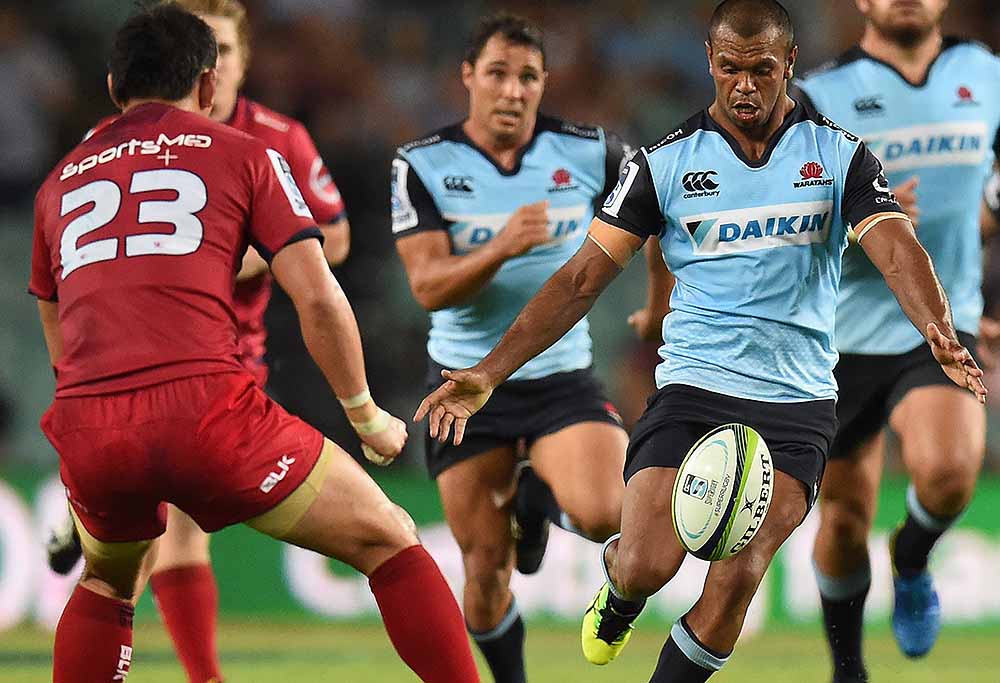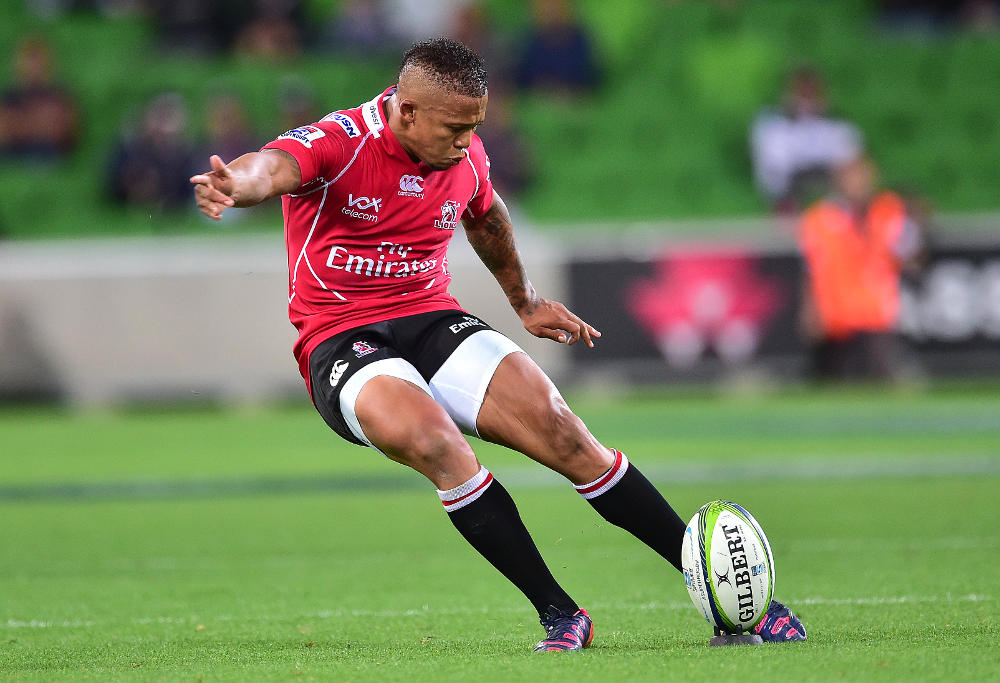Hansen's done Joey Manu no favours comparing him to SBW. He'll be more like RTS - and Foz is the reason why
I don’t really get the comparisons between Joey Manu and Sonny Bill Williams. I realise they have the Roosters in common, along with a…

Professional rugby has come a long way in 20 years.
It is fair to say that the early days were mostly players being paid to do the same things they did while they were amateur – binge drinking court sessions and fry-ups on match day morning.
Today’s professional environment is a world of nutritionists and personalised conditioning programs. Skinfold tests and benchmarking.
In the last month I have visited rugby clubs from all four major professional world competitions, and what stands out are the similarities as much as the differences.
With increasing amounts of money coming into the game – even in struggling Australia, where the quantum is less but the principles the same – clubs use that money to build backroom structures that enable them to be competitive. The rest goes to player salaries.
Some clubs spend money they don’t actually have, but that’s another topic for another day.
As a result, clubs begin to look remarkably similar. The next time you go to a game take a look at the pre-match warm up routines and see if you can differentiate between the two sides. Also, the fact that countries like New Zealand, Australia, Ireland and others follow a model where the clubs or franchises are partly controlled and/or underwritten by the central rugby administration provides for greater homogenisation.
For the anglers out there; they are largely fishing from the same pool, using the same equipment.
The physical environment might vary from club to club. It is impossible not to visit the new training and administration facility at Clermont-Ferrand and be wowed by the facility. And be double wowed by the fact that the building, two superb hybrid artificial pitches and the imposing Stade Michelin are debt free.
But the reality is that most clubs employ a similar number of people doing pretty much the same jobs. They develop young players in an academy. And every week, name a match day squad of 23 players.

Whatever differences there are, they are at the margins and, on a weekly basis, unlikely to be a significant contributing factor to results, because there are so many other variables.
As an aside, for Waratahs fans, the day I was at Clermont I found Sitaleki Timani and John Ulugia chugging through a weights session; both looking in pristine shape, seemingly without a worry in the world.
So where do clubs find their edge?
All of the clubs I visited emphasised character as being central to their recruitment program. The ‘no dickheads’ philosophy is alive and well across the world, so much so that I wonder if there is anywhere left to play for deviant players who don’t fit that mould.
If we accept that a physio is a physio and a weights program a weights program, how then does a club eke out a competitive advantage? And what might that advantage be worth?
The margins are incredibly fine. In the wonderful cauldron that was Principality Stadium last week, Eddie Jones emerged a genius and Rob Howley a dunce. Yet Wales clearly got a lot of things right with their selection, preparation and performance. Howley, and all of Wales, was ultimately let down by a single clearing kick by Jonathan Davies skewing infield instead of to the touchline, and England being good enough to capitalise.
How do all of the dollars invested in facilities and support personnel counter a single human error like that?
Coaches like to talk about controlling the controllables. All are philosophical about factors out of their control that compromise their preparation. Things like a bad refereeing decision, or injuries.
In Dublin, Leinster find an edge turning away from the model favoured in the south of France and, instead of opening the chequebook for anyone with a southern hemisphere Test pedigree, they concentrate on bringing through genuinely local players who bleed blue.
Restricted in their ability to recruit large numbers of overseas players by the Irish rugby union, they use their picks strategically. With around half of their first team unavailable during the Six Nations window, players like Hayden Triggs and Isa Nacewa prove invaluable; their Super Rugby experience and professional approach helping nurse the younger players through this part of the season.
It’s not that Leinster avoids the wider player market – stay tuned for an exciting announcement in the next couple of weeks – but that everything they do is meticulously planned and, to use the word again, totally professional.
As if to reinforce the importance of developing character within a definable Leinster culture, the changing room at their training facility is divided into three sections: one for the elite internationals, one for next level and another for the young guys or newcomers to the squad.
The thinking is that the latter group knows they must earn their stripes and will aspire to improve enough to be re-rated to the more prestigious lockers.
Notable in the middle group was boom centre Gary Ringrose, he of recent heroics for Ireland against the All Blacks and try scorer last week against Italy. Upon asking why he wasn’t in the top section I was told that he hasn’t earned this honour yet, but if he continues his progress and demonstrates the right values, he may well get there.

No chance of Ringrose getting ahead of himself there.
What’s fascinating about Leinster’s approach is that they are twisting conventional thinking about professionalism around. Not conjuring something new or cutting edge, but feeding off their natural strength; local identity and the best amateur values.
It was no surprise to learn of the extent of cross-pollination across codes and the strong correlation between the success of clubs like Hawthorn (AFL), Melbourne Storm (NRL) and Clermont and Leinster, and the collaborative nature of the relationships between the senior coaching staff.
One developing area where some sides are able to gain an edge is in analysis. Universities pump out phys ed, physio and nutrition graduates, but there are no such seats of learning for rugby analysts. Good ones, who live and breathe rugby, are around, but exceptional ones develop over time and are thin on the ground.
More power again to Leinster, picking up none other than The Roar’s Nick Bishop to help them out. Anyone who reads these pages on a Wednesday will understand exactly what I’m talking about.
So, looking to the Super Rugby franchises, where are the key points of difference going to come from this season?
For some sides, advantage lies with their home ground. Protected Forsyth Barr Stadium suits the Highlanders’ style, and when a wind blows in Wellington, Beauden Barrett and TJ Perenara know exactly how to exploit conditions with a custom-made kicking game.
Other sides look to their coaching staff. Rebels head coach Tony McGahan is delighted at the contribution being made by backs coach Morgan Turunui, although the anticipation at what he can conjure with wingers Sefanaia Naivalu and Marika Koroibete might come to nothing if the Rebels keep losing key forwards to injury.
With other coaches, it is more of a slow burn, where the experience and lessons gained from losing years finally feeds into a confident winning streak. Tana Umaga, Raul Perez and Daryl Gibson spring to mind.
On that basis, it is difficult to envisage a side with a rookie coach winning the competition, although Nick Styles and Dave Wessels are both well regarded, and the Reds and Force can expect to finish higher this year.
Sometimes teams are able to get a jump by taking the rest of the competition by surprise. For example, it took a long time for Australian and New Zealand franchises to cotton on to just how good Johan Ackermann’s Lions side was last year. In the end, it was only a dubious selection gamble giving away home finals advantage that cost them.

No-one will underestimate the Lions this year. But the way the competition is structured does provide an opportunity for a side like the Stormers or the Sharks to jump out of the blocks early and position themselves for playoffs later in the season.
For the New Zealand franchises, the nature of the competition makes it very difficult for them to establish dominance. They tend to drop games against each other. On the other hand, should they accumulate enough wins against other sides, this makes them more ‘finals ready’ at the business end.
Super Rugby is an incredibly tough, attritional competition. Throw in ridiculous travel imposts (the Sunwolves clocked in excess of 90,000kms last season) and it becomes clear that the idea that a side can gain some kind of a decisive edge over the others is unlikely.
What’s more likely is that the finalists will be sides who limit the impact of bad things; injuries, travel fatigue, dropping games in tight finishes and so on. It is here when the vast support teams will really earn their money; getting a key player back fit and ready a few days earlier, or keeping a whole side mentally fresh, or finding a hitherto unknown weakness in an opposition player to exploit.
From there, the winner will be the team that is in the right place at the right time, who enters the finals on an upswing, playing at home, with enough petrol left in the tank to take advantage.
Just who that team will be in a few months’ time is anyone’s guess. But it’s going to be one hell of a ride to find out.
Finally, a word to acknowledge the passing of Dan Vickerman. Shocking news, and another reminder, in the wake of the deaths of Sione Lauaki and Joost van der Westhuizen – all of them far too young – of how precious and fragile life is.
Very best wishes to his family.
Need help? Anyone can contact Lifeline on 13 11 14.